It is considered a place of pilgrimage and a processional entrance to the sanctuary of the the House of the Thirteen Heavens Canada de la Virgen a
It is considered a place of pilgrimage and a processional entrance to the sanctuary of the the House of the Thirteen Heavens
Canada de la Virgen archaeological zone served as a refuge and ceremonial and astronomical site of our ancestors
San Miguel de Allende/Gto News
For most people, San Miguel de Allende awakens images of an iconic colonial and insurgent city in memory.
However, in its vicinity lies one of the most impressive archaeological areas of Guanajuato:
- Canada de la Virgen

Opened to the public in 2011, after ten years of research, rescue and consolidation work, Canada de la Virgen is located 30 kilometers from the City of San Miguel de Allende, on a hill associated with a set of deep ravines extending over an approximate area of 16 hectares.

This settlement had its peak between 640 and 900 AD, during the Mesoamerican Epiclassic. According to the archaeological evidence found, the Otopames have been suggested as the pre-Hispanic group that inhabited the region.
The layout of the buildings in Canada de la Virgen shows that its ancient inhabitants built it from the contemplation of the path of the sun. Its temples present a symmetrical alignment with the stars, a characteristic that makes it a unique city among Mesoamerican ceremonial centers.

The site is made up of four monumental structures built on a plateau that was artificially filled and leveled to obtain an inclination of 18 degrees with respect to the north, with a clear purpose of directing the compositional axis of the complex to the sunrises and sunsets.
This arrangement suggests the possibility that Cañada de la Virgen may have functioned as an astronomical observatory with the purpose to reflect the stellar cycles to which was linked the life of the groups of farmers who also practiced gathering and hunting in the surrounding semi-desert regions.
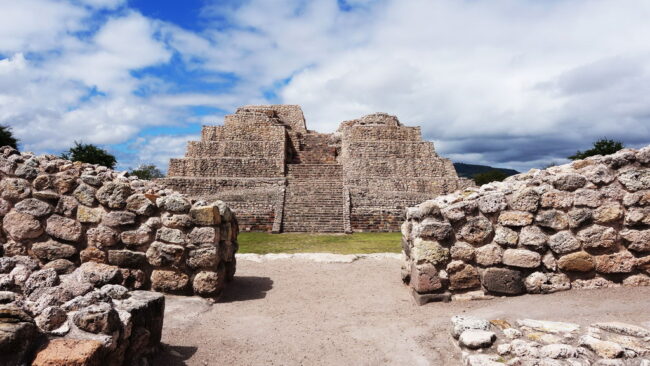
The hills surrounding the site were also part of the site planning, serving as axes in the design of the area. Cairns located and identified on hills in four directions have been related to points of architectural intersection such as corners, entrances and stairs.
The site is accessed by a ceremonial road almost a kilometer long, its design is associated with the sunrise and the path that the star travels through the celestial vault. This space was surely a place of pilgrimage and a processional entrance to the sanctuary for the devout visitors to the temple located at the top: the so-called House of the Thirteen Heavens.
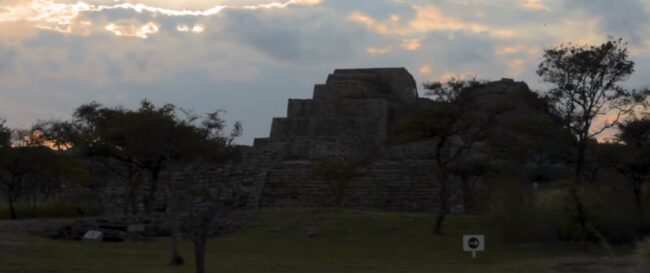
The House of the Thirteen Heavens is a fundamental space for celestial observation. It is made up of a sunken patio, a pyramidal basement more than 15 meters high and three platforms that close the complex to the east, north and south.
In this complex, funerary finds were made that have given rise to forensic studies that have provided information on cultural practices, such as cranial deformation, burial, ancestral veneration and rituals associated with the founding of the place.
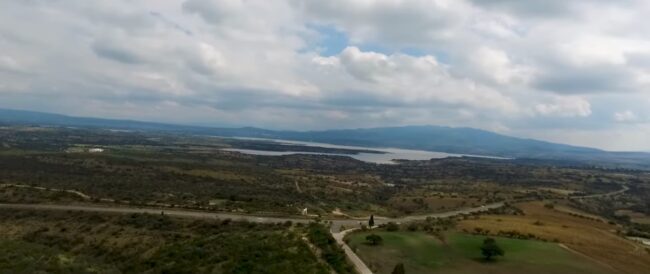
At the top of the pyramidal basement is the Red Temple and its mural painting, in which you can see red and black horizontal stripes that could allude to day and night.
The sunken patio, an important architectural resource that is very characteristic in some archaeological areas of Guanajuato, is considered a central element in the architectural design, since it acts as a unifying link in the arrangement of the platforms or bases for the temples, as well as in the arrangement of living spaces for the social hierarchy.
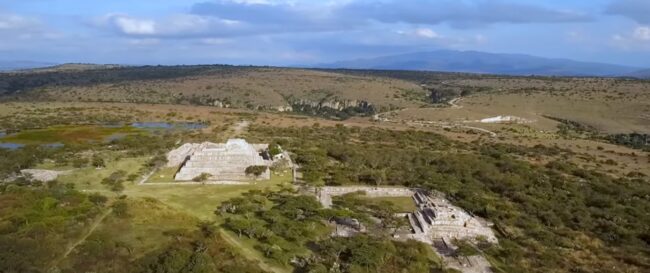
Canada de la Virgen is currently the most visited archaeological zone in Guanajuato. In 2019 it was declared one of the Seven Treasures of the Cultural Heritage of San Miguel de Allende.
Visit this and other archaeological zones of Guanajuato:
- Open from Tuesday to Sunday
- From 10 am to 6 pm
- Admission of visitors closes at 4 pm
- The duration of the tour is estimated at two hours
- General admission is 70 pesos -12 years and older-
- 20 pesos for children under 12 years


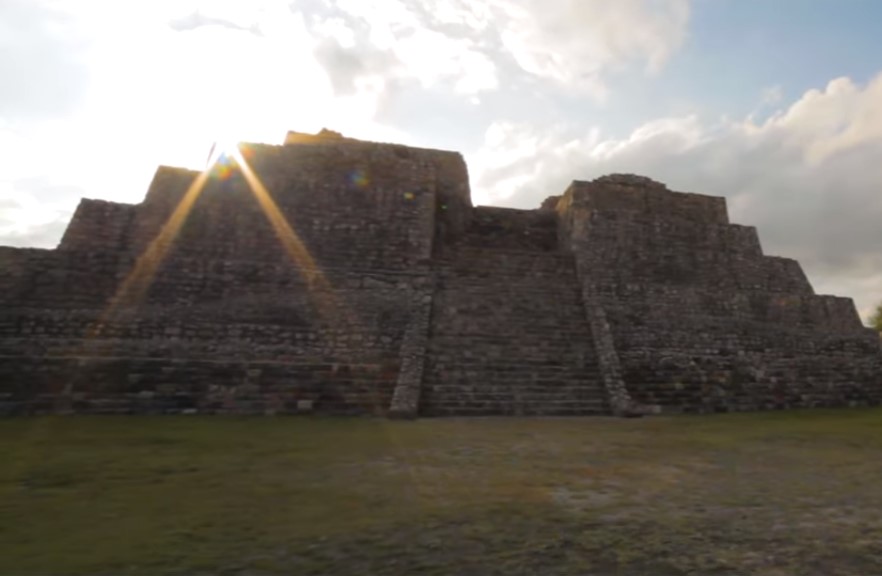
COMMENTS